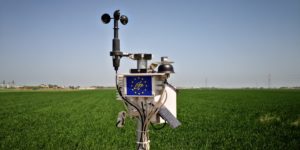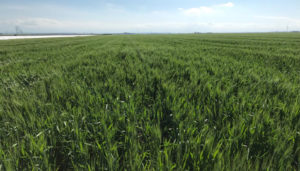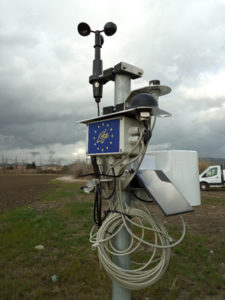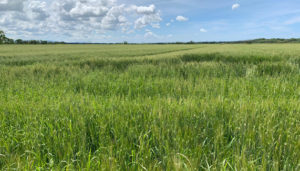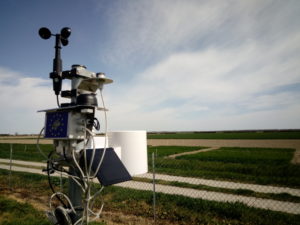LIFE AGRESTIC aims at fostering the adoption by EU farmers of innovative and efficient cropping systems with a high climate-change mitigation potential, and spreading innovative views and tools for climateready and resource efficient agriculture.
The proposed innovation includes:
– introduction of legumes and catch crops in the crop rotations for reducing GHG emissions and increasing carbon sequestration and organic N supply;
– implementation of a DSS (Decision Support System) for an efficient management of the innovative crop rotations with focus on the use of external inputs (nitrogen fertilizers, Pesticides, etc.) and non-renewable resources (soil and fuel).
The innovative N- and C-Efficient Cropping Systems (ECSs) are based on the introduction of legumes and catch crops in 4-year rotations; different legumes (pea, chickpea and lentil) and catch crops (with single species or mixtures) will be considered in three different, representative environments. A preparatory action is needed for optimal design of the field activities. Specifically, it is necessary to:
- select the most suitable varieties of legumes and catch crops to be used in the three environments;
- set-up an experimental design able to account for the test complexity and prepare the plots for starting the test.
In addition, since local genotypes of both legumes and catch crops will be evaluated for their capability to further improve the ECSs, a preparatory action will be needed for
3. retrieving of these genotypes.
The cropping system rotations
The experiments in the three demonstration sites will be designed by HORTA to:
- be representative of real farm operations (plot size to be managed with farm machinery);
- meet the installation needs of the prototype soil GHG monitoring stations both on Conventional Cropping Systems (CCSs) and Efficient Cropping Systems (ECSs);
- consider the simultaneous presence of all crop in the rotations;
- permit robust statistical comparison of the results.
Horta will develop the layout of the three demonstration sites and identify the appropriate plots in the farms.
Three ECSs, based on the introduction of legumes in the rotation, will be considered. The study will consider 4-year rotations, even though the project will collect data for 3 cropping seasons only. A 4-year rotation is necessary for phytosanitary reasons, because of damages caused by soil borne diseases affecting legume crops in shorter rotations.
Demonstration sites will be set-up and managed in three representative environments in such a way to robustly compare the CCSs and ECSs; each crop will be included in the rotation.
Three demonstration sites
- Site 1: Foggia (Apulia), Mediterranean climate conditions
In Foggia, wheat was chosen as starting crop, such as in the other sites.
In this Mediterranean climate the compared rotations are based on durum wheat, barley and sunflower (regarding Conventional Cropping Systems – CCSs) and lentils, malting barley (with cover crop ) and sunflower (regarding Efficient Cropping Systems – ECSs). The sowing was carried out with 210 kg/ha of durum wheat Leondur variety.The agrometereological station at the demonstration site in Foggia (Puglia) Durum wheat in the demonstration field in Foggia (Puglia) - Site 2: Pisa (Tuscany), transitional climate between North and South
In this transitional climate area, a medium way between the one typical of northern Italy and the other of southern Italy, the crop system comparison is based on the following rotation: corn, barley and sunflower (relevant to Conventional Cropping Systems – CCSs) and on the rotation of chickpea, corn barley (with cover crop) and sunflower (regarding Efficient Cropping Systems – ECSs).
The year zero sowing was carried out with 210 kg/ha of durum wheat Minosse variety.The agrometereological station at the demonstration site in Pisa (Tuscany) Durum wheat in the demonstration field in Pisa (Tuscany)
- Site 3: Ravenna (Emilia-Romagna), a nearly continental climate
The nearly continental climate is typical of this area (Emilia-Romagna).
In this nearly continental area the compared crop systems are based on the following rotation: corn, durum wheat and tomato (relevant to Conventional Cropping Systems – CCSs) and on the rotation of pea, durum wheat (with cover crop) and tomato (regarding Efficient Cropping Systems – ECSs).
The year zero sowing was carried out with 180 kg / ha of Soft wheat Lucilla variety.
Horta will also install 3 agrometeorological stations equipped with the following sensors: rain, leaf wetness duration, air temperature, relative humidity, wind and solar radiation. Sensors for soil temperature and humidity will also be placed in all plots of the three demonstration sites.
In two demonstration sites, porous capsules will be installed in soil to catch the excess of water to assess the potential leaching of nitrates, while in the third one (E3), losses of nitrogen will be measured through an underground tubular drainage.


